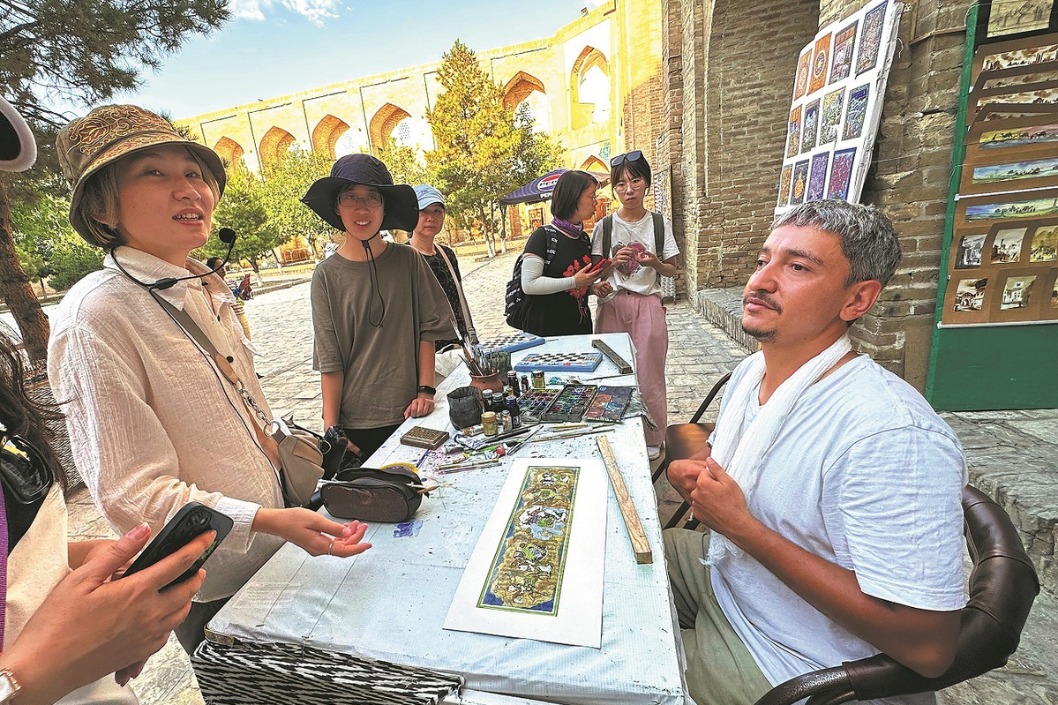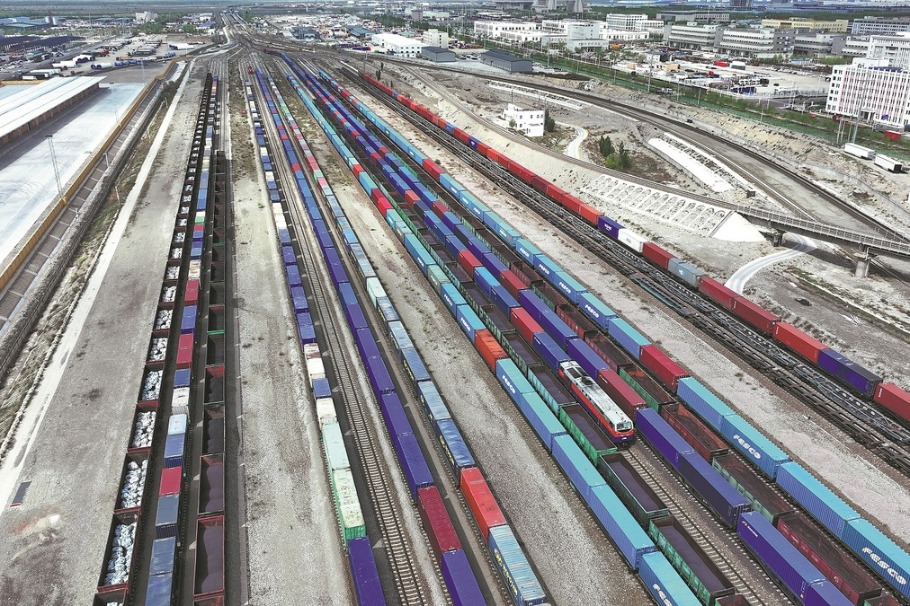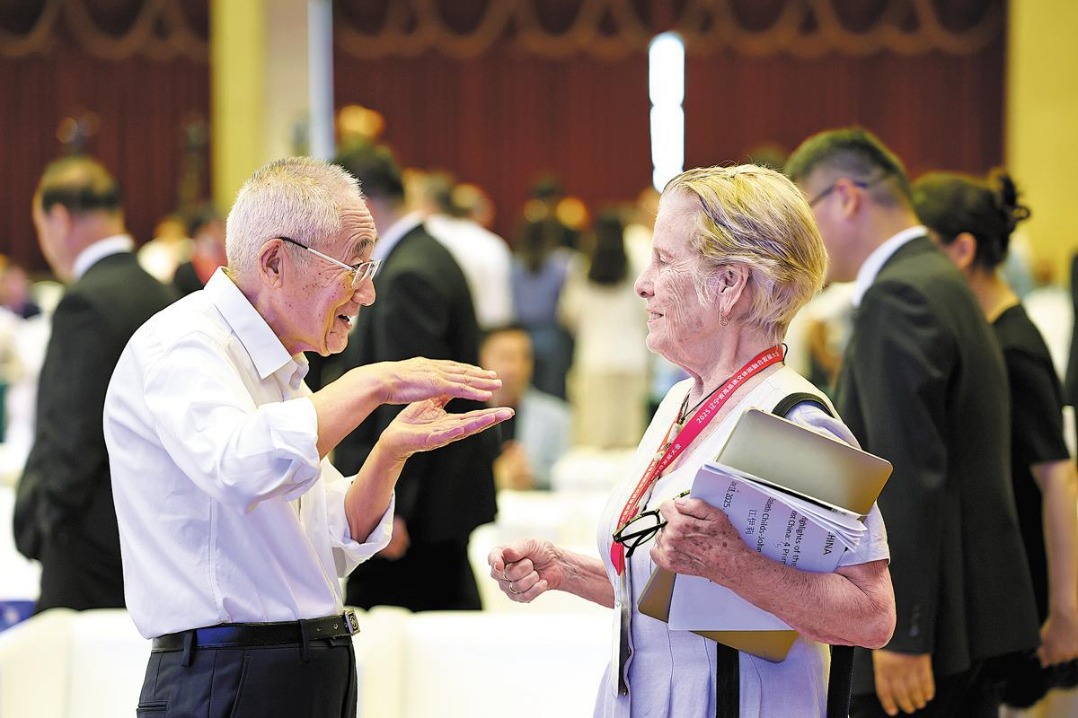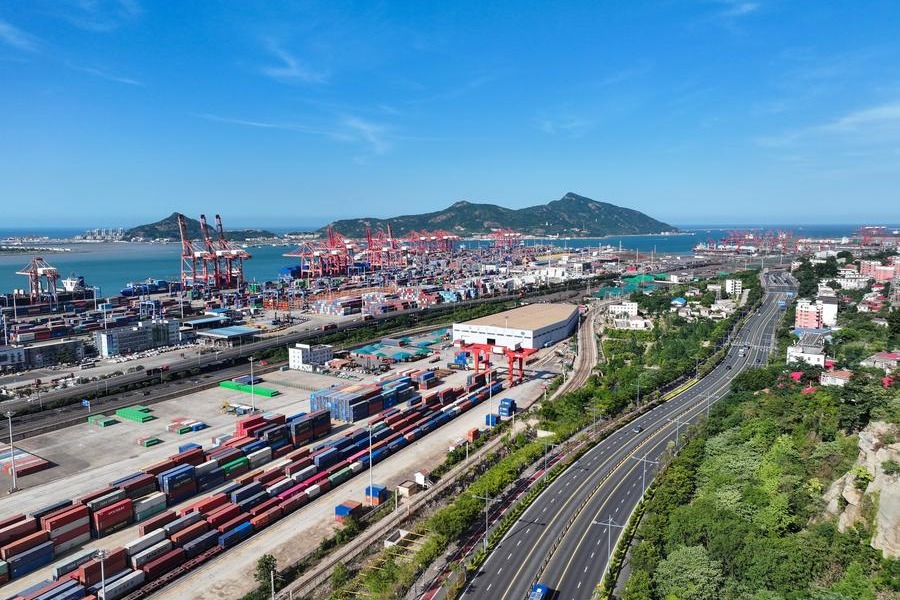Charting the road to Astana


The second meeting of the heads of state of China and Central Asian countries will further drive the strong cooperation momentum
On June 16 to 18, the Second Summit of Heads of State of the China-Central Asia format is being held in Astana, the capital of Kazakhstan. It took about 30 years of painstaking joint work to reach a qualitatively new level of interaction, during which deep strategic partnership relations have been built on a solid foundation of bilateral cooperation and mutual trust.
Today, the paths and interests of China and the Central Asian countries coincide on a wide range of regional and international issues, ranging from ensuring national and regional security to a mutual desire to increase cooperation in trade, the economy and environmental protection.
The China-Central Asia format highlights the increased importance of Central Asia as the geopolitical core of the Eurasian continent. In recent years, the region has seen tangible changes for the better; the interests of consolidation, good neighborliness and friendly communication prevail; and emerging problems are eliminated through political and diplomatic means.
The equal dialogue has laid the foundations for greater inclusivity in the region, and it has become an important source for building sustainable regional peace and cooperation.
The China-Central Asia format is a long-term project that complements and enriches the cooperation established over many years at the bilateral level and within the Shanghai Cooperation Organization. It is supported, in particular, by the secretariat in Xi'an and the 19 interdepartmental mechanisms created to coordinate and implement the agreements reached by the heads of China and the "regional five", as well as the launch of the Economic Dialogue, the establishment of a partnership in the energy sector, the regular holding of the Business Council, the Industry and Investment Cooperation Forum, and much more. Such a constructive and far-sighted approach makes it a very effective platform for identifying mutually beneficial paths for joint development.
The tangible outcomes over the past two years confirm this conclusion. By the end of 2022, the volume of China's exports and imports with the Central Asian countries amounted to $70.2 billion. By the end of 2024 the foreign trade turnover between them reached $94.82 billion. It is also worth noting that, according to the Eurasian Development Bank, by the end of 2024, Central Asia accounted for 47 percent of all Chinese investments in the Eurasian region. Strengthening transport connectivity, not only between China and Central Asia, but also within the region itself, will help boost this momentum. For China and the Central Asian countries, it is not the speed of movement that is important, but the commitment to achieving practical goals.
In Astana, it is expected that further development of a seamless and safe transport system will be one of the key topics discussed. For example, freight trains from China to Europe via Kazakhstan have become commonplace these days. In 2024,32 million metric tons of cargo were transported along this route, a record high. At the same time, container transit to Europe increased by 43 percent and the volume of transit traffic reached 15.3 million tons, which is 19 percent more than that of 2023.It is expected that by the end of 2025, China and Kazakhstan will increase the volume of cargo transportation to 35 million tons. Such rapid growth, along with other factors, will be facilitated by the opening of the Kazakh terminal in the Xi'an international dry port and the increase in the number of container trains through the port of Aktau.
The transportation of goods along the China-Kyrgyzstan-Uzbekistan railway in the foreseeable future, as well as the year-round operation of the multimodal China-Tajikistan-Uzbekistan-Turkmenistan-Iran-Turkiye corridor, may soon turn Central Asia into one of the largest transit regions on the Eurasian continent. At the same time, it is important that China and the "regional five" manage to formulate a long-term coordinated policy for the development of international transport corridors, such as the Trans-Caspian International Transport Route, which would contribute to strengthening regional cooperation and enhancing the integration of the Central Asian countries.
Joint promotion of the Belt and Road Initiative and the strengthening of the China-Central Asia link have led to the expected growth in interest among young people from Central Asian countries in obtaining education in China. In 2023, about 30,000 young people from the region studied at Chinese universities and there are 13 Confucius Institutes in the Central Asian countries. In turn, Central Asian language departments have been opened in Chinese universities. Graduates of Chinese universities are actively involved in the implementation of large infrastructure and economic projects, in joint and Chinese enterprises in the region. In 2025, the number of graduates is estimated to exceed 7,000, half of that number — 3,467 — will work in Uzbekistan (up 43.6 percent from 2023). It is important that the leaders of China and the Central Asian countries pay close attention to the training of highly qualified specialists. At the upcoming meeting in Astana, the leaders of China and the "regional five "can take another step toward the formation of a common educational space.
In the Xi'an Declaration of the China-Central Asia Summit, the parties noted the importance of cooperation in tourism and the development of "Central Asia-China tourism routes". The issue of connecting the countries of the region to the Chinese "Cultural Silk Road" was considered. This led to the simplification of visa procedures, the expansion of air travel between China and the Central Asian countries, and the development of transport and tourism infrastructure which has sparked a tourism boom in Central Asia. The flow of tourists from China to Kazakhstan alone in 2024 increased by 78 percent compared to 2023.China is a world leader in tourism, having received 132 million tourists in 2024, whose expenditure approached $100 billion. China's combined efforts with the "regional five" in tourism can create a powerful synergistic effect and have a significant impact on unlocking the enormous tourism potential of the Central Asian countries.
The path traveled together from Xi'an to Astana testifies to the strengthening of political dialogue and the firm intention of China and the "regional five" to move toward their intended goals without stopping at what has been achieved, despite the geopolitical challenges and threats. The magnitude of converging interests dictates the need to constantly strengthen the foundation of multifaceted interaction so that it is resilient to complex and unpredictable turbulence in international relations. The Astana summit promises to take cooperation within the China-Central Asia format to a qualitatively new level, to create additional opportunities for further strengthening friendship and good neighborliness based on common history and common values.
The author is a professor at the Academy of Public Administration under the President of the Republic of Tajikistan, a professor at Shanghai University of Political Science and Law and former secretary-general of the Shanghai Cooperation Organization (2016-18). The author contributed this article to China Watch, a think tank powered by China Daily. The views do not necessarily reflect those of China Daily.
Contact the editor at editor@chinawatch.cn.































